The future of fashion design, protagonist at IE University

Influential voices in the fashion industry discussed tradition, craftsmanship, and technology shaping a sustainable, purpose-driven future.
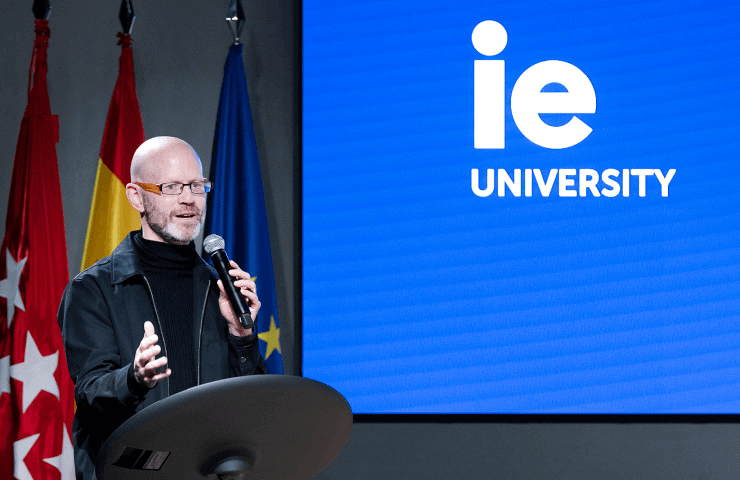
The challenges and opportunities of sustainable growth for the fashion industry took center stage in a debate featuring influential voices, fashion designers, top executives, and academic experts at an event hosted by IE School of Architecture and Design at the IE Tower. The School will launch its new Bachelor in Fashion Design in September 2024. With a focus on sustainability, fashion management skills, and the fusion of traditional craftsmanship and technology, the new Bachelor will train leaders in the fashion industry to make a positive change through innovative design.
David Goodman, Dean of IE School of Architecture and Design, recalled at the event that the fashion industry is a major contributor to some of the most pressing challenges we face, from climate change to water consumption, labor standards and social equity: “A different path, one that focuses on circularity, inclusivity, and social responsibility in sourcing and manufacturing is urgently needed.”
“We believe in the power of the creative industries to create a more sustainable, more beautiful, and more just world, and we think that fashion design is at the center of that transformative capacity.”
David Goodman, Dean of IE School of Architecture and Design
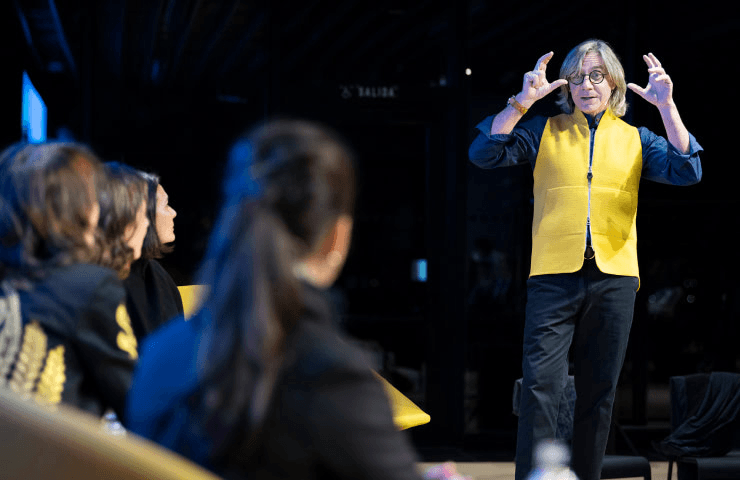
Baruc Corazón, Bachelor in Fashion Design Academic Director, shared his insights about the main challenges of the fashion design industry with Adriana Domínguez, Executive Director of Adolfo Domínguez; Belén Llamas-Ferrier, on behalf of the Asociación Contemporánea de Artes y Oficios (Contemporary Association of Arts & Crafts) and the local partner for Spain of the Michelangelo Foundation for Creativity and Craftsmanship; Margarita Ruyra de Andrade, co-founder of Es Fascinante; and Caterina Pañedo–Oteyza, co-founder of Oteyza.
Baruc Corazón stated that fashion represents the most visible aspect of the creative industries, shaping our identities and lives, while generating a substantial volume of products and transactions thus significantly impacting our society. While minor cultural shifts manifest as "trends" or "styles" in fashion, a profound paradigm shift in culture requires the discovery of an entirely new framework within the realm of fashion.
“A revolution of consciousness is happening now meaning that we, users, consumers are choosing to buy a product not as much as before for what it looks like, but for what it says about who has made it, where does it come from, how it has a right to our hands.”
Baruc Corazón, Director of the Bachelor in Fashion Design
The panelists delved into three essential aspects of the discipline: trends in fashion design and their connection to time; textiles, the prima materia of fashion, and its correlation with space and local culture; intelligence that utilizes materials to craft a design or artwork, manifested through techniques, technology, heritage, and tradition.
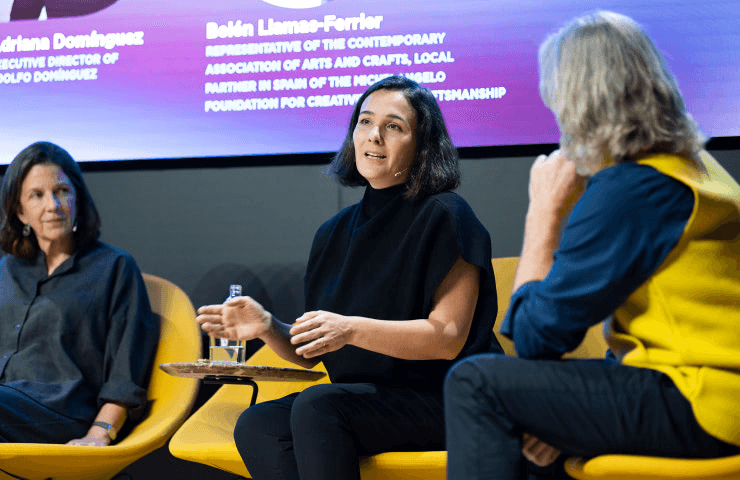
Adriana Domínguez, leading creative and sustainable transformation at Adolfo Domínguez, emphasized that the key to success lies in a "distinctive design" aligned with sustainability criteria. She illustrated the company's connection to local culture through the incorporation of linen in their garments as this fabric reflects a rich traditional culture historically embraced by locals in Galicia. Domínguez also stressed the importance for students and early practitioners to connect with the industry, citing Spain as an ideal place for the fashion sector and she also noted that larger companies can collaborate with artisans and designers to create capsule collections, entering mainstream markets and collectively raising awareness about consumption.
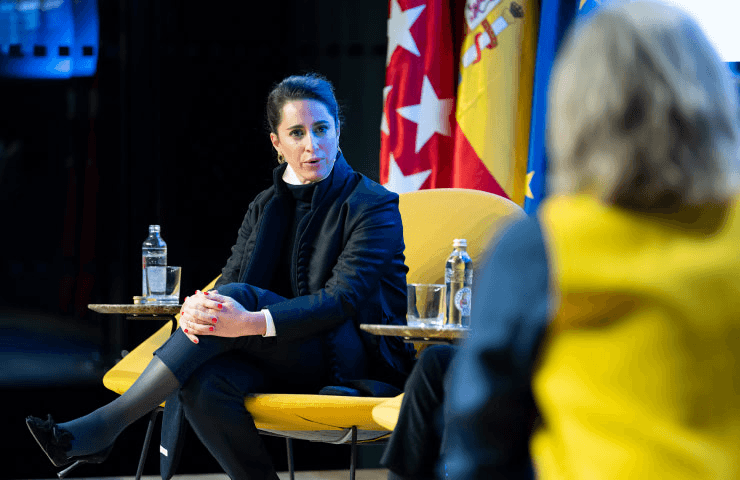
Caterina Pañedo–Oteyza discussed the synergy between old craftsmanship and contemporary design, highlighting her company's revival of the traditional Spanish cape from the 16th century. They modernized it by using compressed, lighter wool for enhanced functionality. Additionally, she outlined how the company reintroduced black merino wool, a traditional materia prima, to their garments, contributing to the preservation of the nearly extinct black sheep breed. Their collaboration with the Ministry of Agriculture and the non-profit Asociación de los Criadores de Lana Merino aims to selectively breed the best specimens and revive this historic breed.
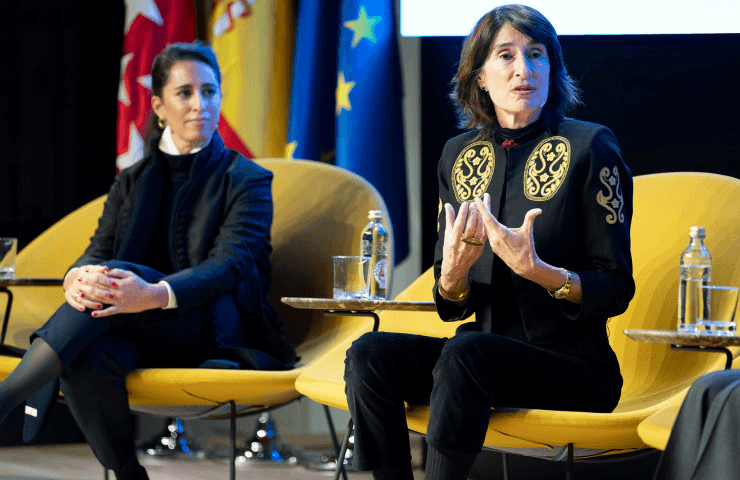
Margarita Ruyra de Andrade, who possesses extensive experience dealing with intangible heritage discussed how tradition and digital platforms intersect. She explained that Es Fascinante focuses on art, craftsmanship, and slow fashion to disseminate Spanish cultural heritage globally through exhibitions, art, theatre performances, or styling. She also emphasized the necessity of building a community and relying on technology to make heritage present and project it into the future.
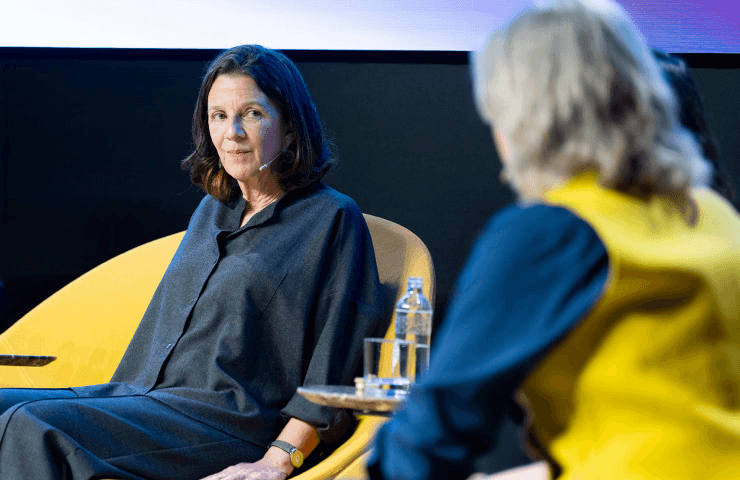
Belén Llamas-Ferrier, a Spanish artisan championing craftsmanship for over 20 years, stressed the industry's need to rediscover its roots for innovative creation. Emphasizing the risk of mediocrity without an understanding of the past and real communication between designers and artisans, she praised IE University's hands-on study plan. She advocated that ateliers could flourish by integrating tradition, technology, and commercialization to produce contemporary objects rooted in tradition and excellent craftsmanship.